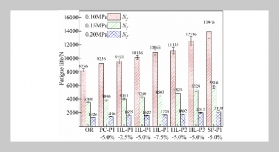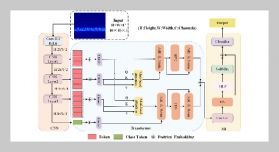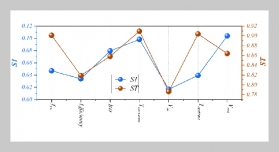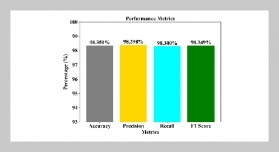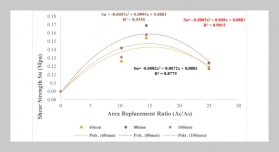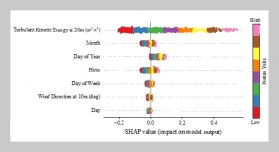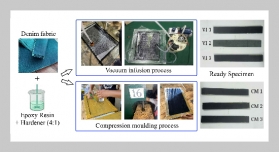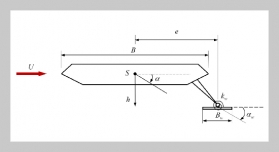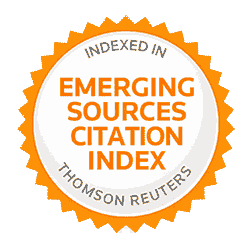- [1] M. S. Kumar and S. T. Revankar, (2017) “Develop�ment scheme and key technology of an electric vehicle: An overview" Renewable and Sustainable Energy Reviews 70: 1266–1285.
- [2] W. Waag, C. Fleischer, and D. U. Sauer, (2014) “Criti�cal review of the methods for monitoring of lithium-ion bat�teries in electric and hybrid vehicles" Journal of Power Sources 258: 321–339.
- [3] A. M. Andwari, A. Pesiridis, S. Rajoo, R. Martinez�Botas, and V. Esfahanian, (2017) “A review of Battery Electric Vehicle technology and readiness levels" Renew�able and Sustainable Energy Reviews 78: 414–430.
- [4] B. Scrosati and J. Garche, (2010) “Lithium batteries: Status, prospects and future" Journal of power sources 195(9): 2419–2430.
- [5] J.-M. Tarascon and M. Armand, (2001) “Issues and challenges facing rechargeable lithium batteries" nature 414(6861): 359–367.
- [6] Q. Zhang and R. E. White, (2007) “Calendar life study of Li-ion pouch cells" Journal of Power Sources 173(2): 990–997.
- [7] Q. Zhang and R. E. White, (2008) “Calendar life study of Li-ion pouch cells: Part 2: Simulation" Journal of Power Sources 179(2): 785–792.
- [8] K. Honkura, K. Takahashi, and T. Horiba, (2011) “Capacity-fading prediction of lithium-ion batteries based on discharge curves analysis" Journal of power sources 196(23): 10141–10147.
- [9] Q. Zhang and R. E. White, (2008) “Capacity fade anal�ysis of a lithium ion cell" Journal of Power Sources 179(2): 793–798.
- [10] R. Narayanrao, M. M. Joglekar, and S. Inguva, (2012) “A phenomenological degradation model for cyclic aging of lithium ion cell materials" Journal of the Electrochem�ical Society 160(1): A125.
- [11] M. W. Verbrugge and Y.-T. Cheng, (2009) “Stress and strain-energy distributions within diffusion-controlled insertion-electrode particles subjected to periodic potential excitations" Journal of The Electrochemical Society 156(11): A927.
- [12] E. Sarasketa-Zabala, I. Gandiaga, L. Rodriguez�Martinez, and I. Villarreal, (2014) “Calendar ageing analysis of a LiFePO4/graphite cell with dynamic model validations: Towards realistic lifetime predictions" Jour�nal of Power Sources 272: 45–57.
- [13] I. Bloom, B. Cole, J. Sohn, S. A. Jones, E. G. Polzin, V. S. Battaglia, G. L. Henriksen, C. Motloch, R. Richardson, T. Unkelhaeuser, et al., (2001) “An accelerated calendar and cycle life study of Li-ion cells" Journal of power sources 101(2): 238–247.
- [14] E. Thomas, I. Bloom, J. Christophersen, and V. Battaglia, (2008) “Statistical methodology for predict�ing the life of lithium-ion cells via accelerated degradation testing" Journal of Power Sources 184(1): 312–317.
- [15] E. Thomas, I. Bloom, J. Christophersen, and V. Battaglia, (2012) “Rate-based degradation modeling of lithium-ion cells" Journal of Power Sources 206: 378–382.
- [16] M. Ecker, J. B. Gerschler, J. Vogel, S. Käbitz, F. Hust, P. Dechent, and D. U. Sauer, (2012) “Development of a lifetime prediction model for lithium-ion batteries based on extended accelerated aging test data" Journal of Power Sources 215: 248–257.
- [17] J. Schmalstieg, S. Käbitz, M. Ecker, and D. U. Sauer, (2014) “A holistic aging model for Li (NiMnCo) O2 based 18650 lithium-ion batteries" Journal of Power Sources 257: 325–334.
- [18] J. Belt, V. Utgikar, and I. Bloom, (2011) “Calendar and PHEV cycle life aging of high-energy, lithium-ion cells containing blended spinel and layered-oxide cathodes" Journal of Power Sources 196(23): 10213–10221.
- [19] M. Kassem, J. Bernard, R. Revel, S. Pelissier, F. Duclaud, and C. Delacourt, (2012) “Calendar aging of a graphite/LiFePO4 cell" Journal of Power Sources 208: 296–305.
- [20] K. Takei, K. Kumai, Y. Kobayashi, H. Miyashiro, N. Terada, T. Iwahori, and T. Tanaka, (2001) “Cycle life estimation of lithium secondary battery by extrapolation method and accelerated aging test" Journal of Power Sources 97: 697–701.
- [21] J. Wang, P. Liu, J. Hicks-Garner, E. Sherman, S. Souki�azian, M. Verbrugge, H. Tataria, J. Musser, and P. Fi�namore, (2011) “Cycle-life model for graphite-LiFePO4 cells" Journal of power sources 196(8): 3942–3948.
- [22] Y. Cui, C. Du, G. Yin, Y. Gao, L. Zhang, T. Guan, L. Yang, and F. Wang, (2015) “Multi-stress factor model for cycle lifetime prediction of lithium ion batteries with shallow-depth discharge" Journal of Power Sources 279: 123–132.
- [23] K. A. Smith, C. D. Rahn, and C.-Y. Wang, (2007) “Con�trol oriented 1D electrochemical model of lithium ion bat�tery" Energy Conversion and management 48(9): 2565-2578.



